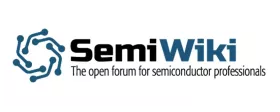... And Now Intel Will Make a Turn Towards Memories as it Plans to Capture Samsung
While eyes remain fixated on the architectural battle between Intel and ARM, a second front is soon about to open up that will determine mobile supremacy for the rest of the decade. Whereas yesterday’s story on the collapse of Wintel and the anointing of Google and Samsung are repeated endlessly, now tables are being set for a significant turning. Thanks to Intel introducing a very competitive Silvermont architecture and the reality that a process gap is growing vis-à-vis Samsung’s Foundry, a new hierarchy is forming that will allow the x86 monopoly to extend its power by pulling in DRAM and NAND into an extended SOC family of solutions. Shortages and rising prices in the memory market are actually about to work to the favor of Intel relative to the ARM merchant players and perhaps sets the stage for a Samsung alliance that one could say resembles that of the IBM PC win in 1981.
To read the full article, click here
Related Semiconductor IP
- HBM4 PHY IP
- Ultra-Low-Power LPDDR3/LPDDR2/DDR3L Combo Subsystem
- MIPI D-PHY and FPD-Link (LVDS) Combinational Transmitter for TSMC 22nm ULP
- HBM4 Controller IP
- IPSEC AES-256-GCM (Standalone IPsec)
Related Blogs
- TSMC (Lincoln) vs Samsung (Clinton) vs Intel (Washington)
- Samsung 28nm Beats Intel 22nm!
- Intel 14nm versus Samsung 14nm
- Can Intel Catch Samsung? Can Anybody Catch Samsung?
Latest Blogs
- ReRAM in Automotive SoCs: When Every Nanosecond Counts
- AndeSentry – Andes’ Security Platform
- Formally verifying AVX2 rejection sampling for ML-KEM
- Integrating PQC into StrongSwan: ML-KEM integration for IPsec/IKEv2
- Breaking the Bandwidth Barrier: Enabling Celestial AI’s Photonic Fabric™ with Custom ESD IP on TSMC’s 5nm Platform
